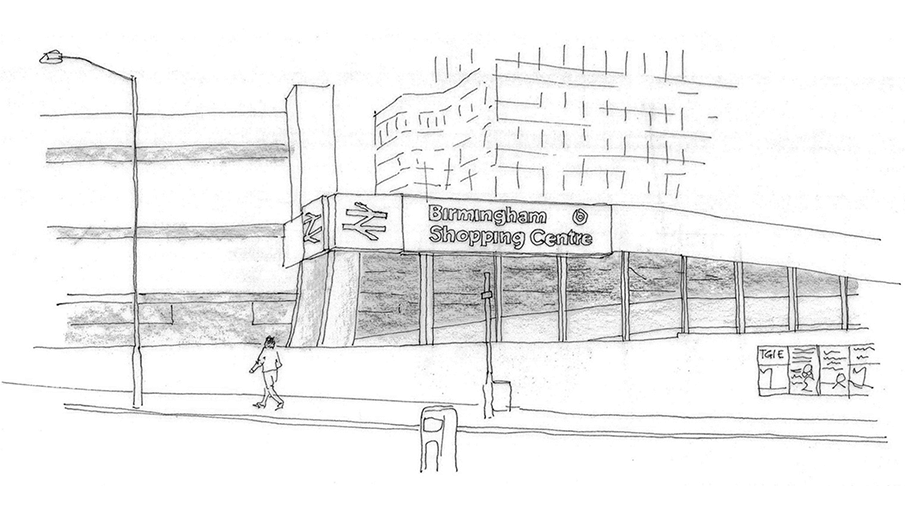The history of Birmingham New Street station
New Street has seen significant changes in its history.
Birmingham was the northern terminus of the first inter city railway from London and growing demand for rail services in the 19th century led to the development of a station which was the largest in the country.

Railway modernisation in the 20th century was not kind to Birmingham New Street, but today significant investment in redeveloping the station will turn it into a 21st century transport hub.
The first link with London
The original passenger station for Birmingham was at Curzon Street, opened by the London & Birmingham Railway in 1838. It was soon joined by stations for the Grand Junction Railway and the Birmingham & Derby Junction Railway nearby.
Curzon Street was the northern end of the London & Birmingham line and was designed by Philip Hardwick to resemble his grand arch at Euston. However, the station quickly became overwhelmed by increasing rail traffic as Birmingham grew into an important industrial and commercial hub. It also became inconveniently located on the outskirts of the expanding city.
After the London & Birmingham and Grand Junction railways merged into the London & North Western Railway (LNWR) in 1846, a new, more conveniently located station was planned. This new station, Birmingham New Street, was agreed to be shared with the Midland Railway, which had incorporated the Birmingham & Derby Junction Railway in 1844.
Construction
The original New Street station was designed by Edward Alfred Cowper and built by Fox, Henderson & Co, who also constructed Paddington Station and the Crystal Palace. When completed, New Street had the largest single-span arched roof in the world, measuring 212 feet wide and 840 feet long, covering four through platforms and four turntable roads for marshalling trains. Due to its large size and central location, a footbridge was built to provide public access across Birmingham.
New Street opened to passengers in 1851 and was officially opened on June 1, 1854, in a low-key manner. The Queen’s Hotel, designed by William Livock, also opened on the same day to meet passenger demand for accommodation. It was a four-story building with 60 rooms in a plain, Italianate style, giving New Street its general appearance. Curzon Street closed to passenger trains and became primarily a goods station.
Extension
By the late 19th century, New Street needed an extension. Both the LNWR and the Midland Railway, which shared the station, agreed to fund it. The extension, designed by Francis Stevenson, Chief Engineer for the LNWR, was built on the south side for the Midland Railway, while LNWR services used the original north side.
The plans included Great Queen Street (Queen’s Drive), which became a carriageway through the station, and the number of platforms increased to 15. The extension nearly doubled the station’s size, making New Street the largest station in the country at over 12 acres when it opened on February 8, 1885.
In the early 20th century, the LNWR further enlarged the station by extending the Queens Hotel, doubling its size with a new West wing added in 1917.
West Coast Main Line Modernisation
During World War II, New Street station suffered significant bomb damage, leading to extensive repairs, including replacing the roof and remodeling the public footbridge. Other improvements were planned, but the city center location made a major rebuild difficult and costly. However, in the 1950s, the decision was made to modernize the West Coast Main Line, including New Street station. The 19th-century station and the Queen’s Hotel were demolished in 1964.
The second New Street station was designed by Kenneth J. Davies, a planner for British Railways London Midland Region. The remodel included a concrete deck above the platforms, supported by 200 columns. British Railways sold the air rights above the station, allowing the construction of the Birmingham Shopping Centre (now known as the Pallasades) on top of the concrete deck.
The new station had 12 through platforms, and the inner ring road was linked to the station at deck level, instead of having the Queens Drive carriageway running through the center. The development also included the Stephenson Tower, a 20-story office and accommodation block. The new station opened in 1967, coinciding with the electrification of the line between Birmingham and Euston.
Telecommunications and signalling were also modernised with the opening of a new signal box, which centralised the control of train movements in the area. This box, designed by Bicknell & Hamilton and W.R. Healey, the British Railways London Midland Region Architect, was completed in 1964 and is now a Grade II listed building.
The Newest New Street
Birmingham New Street has faced much criticism since its modernisation. Over 140,000 passengers use it daily, more than double its intended capacity, making it the busiest station outside London.
In 2006, Network Rail announced a regeneration scheme for New Street, and work began in 2010. Alongside the station redevelopment, the shopping center above it was upgraded and opened as Grand Central, including a new John Lewis department store.
The redevelopment was completed in 2015. The new concourse is three times larger and enclosed by a giant atrium, allowing natural light throughout the station. This transformation has improved the passenger experience, enhanced links to and through the city center, and boosted the local economy.
Did you know?
The original Birmingham New Street had the largest single span iron and glass arched roof in the world – a record it held until the opening of St Pancras in 1868.